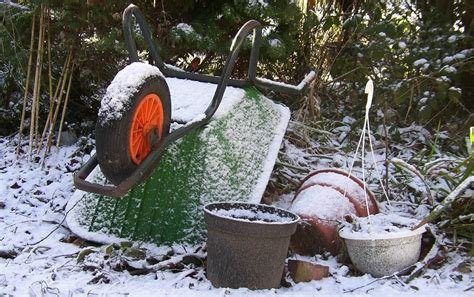Sustainable Living: Small Home and Garden Edition
In today’s fast-paced world, the concept of sustainable living has gained tremendous popularity. As more and more people are becoming aware of the environmental impact of their lifestyle choices, the focus has shifted towards minimizing that impact through sustainable practices. One of the most effective ways to embrace sustainability is by making mindful choices when it comes to our homes and gardens. In this blog post, we will explore the benefits of sustainable living in small homes and gardens, and how you can make a positive impact on the environment with simple yet effective design and gardening techniques. From utilizing vertical space for sustainable gardening to implementing rainwater harvesting and reducing energy consumption, we will delve into various ways to create an eco-friendly oasis in a small space. So, if you’re looking for practical tips on designing an eco-friendly small home and garden, as well as managing waste and composting in limited spaces, this post is for you. Get ready to take on the challenge of sustainable living in a small space and make a big difference!
Benefits of sustainable living in small homes
Living in a small home has numerous benefits for both the environment and the homeowner. One of the biggest advantages is the reduced carbon footprint. Sustainable living in a small home means using fewer resources such as electricity, water, and building materials. This in turn leads to lower energy consumption and less waste production, ultimately helping to minimize the impact on the environment.
Another benefit of sustainable living in small homes is the cost savings. With less space to heat and cool, homeowners can significantly reduce their energy bills. Additionally, the smaller footprint of a small home means a smaller mortgage or rent payment, leading to overall lower living costs. This financial savings not only benefits the homeowner, but also encourages a more sustainable lifestyle by consuming fewer resources.
In addition to environmental and financial benefits, small homes promote a simpler, clutter-free lifestyle. With limited space, homeowners are encouraged to prioritize and downsize their possessions, leading to a more minimalist way of living. This not only promotes a sense of calm and organization, but also reduces the accumulation of unnecessary items and waste.
Furthermore, sustainable living in small homes fosters a sense of community and connection. With limited space, homeowners are encouraged to spend more time outdoors and in shared spaces, fostering a sense of community and connection with neighbors. This promotes a more sustainable way of living by encouraging resource sharing and community engagement.
Designing an eco-friendly small home and garden
Designing an eco-friendly small home and garden is an important step towards sustainable living. It involves making conscious choices that are not only beneficial for the environment but also for the well-being of the individuals living in the space.
One of the key aspects of designing an eco-friendly small home is to prioritize energy efficiency. This can be achieved through the use of energy-efficient appliances, proper insulation, and the incorporation of natural lighting. By reducing energy consumption, individuals can minimize their carbon footprint and contribute to a healthier environment.
When it comes to designing an eco-friendly small garden, utilizing organic and sustainable gardening practices is essential. This includes composting waste, using natural fertilizers, and choosing native plants that require minimal water and maintenance.
Furthermore, incorporating sustainable landscaping techniques, such as rainwater harvesting and utilizing vertical space for gardening, can help maximize the potential of a small outdoor space while minimizing environmental impact.
Utilizing vertical space for sustainable gardening
When it comes to sustainable gardening in small spaces, utilizing vertical space is key. Vertical gardening not only maximizes the use of limited space, but it also promotes sustainability by reducing the need for excessive land and resources. By growing plants vertically, gardeners can take advantage of unused wall space, balcony railings, or even create custom-built vertical structures to support their plants.
One of the benefits of vertical gardening is its ability to conserve water. By planting upwards, the water used for irrigation is distributed more efficiently, reducing waste due to evaporation and runoff. This method also allows for better air circulation and sunlight exposure, promoting healthier growth for the plants.
In addition to water conservation, utilizing vertical space for gardening also enables homeowners to grow their own produce, reducing the carbon footprint associated with transporting food from the grocery store. By growing fresh fruits, vegetables, and herbs at home, individuals can lead a more sustainable lifestyle while reducing their reliance on store-bought produce.
Furthermore, vertical gardening encourages biodiversity and enhances urban ecosystems. By creating green walls or trellises, gardeners can attract beneficial insects and birds, contributing to a healthier and more diverse local ecosystem. This harmonious coexistence with nature aligns with the principles of sustainable living and promotes the overall well-being of the environment.
Choosing low-maintenance plants for small gardens
When it comes to creating a garden in a small space, it’s important to choose low-maintenance plants that will thrive without requiring constant attention and care. There are many options for low-maintenance plants that can add beauty and greenery to a small garden, while also being easy to care for.
One great option for a low-maintenance plant in a small garden is the succulent. Succulents come in a wide variety of shapes, sizes, and colors, and they are known for being extremely hardy and easy to care for. They require very little water and can thrive in almost any type of soil, making them an ideal choice for a small garden.
Another low-maintenance plant option for a small garden is the native perennial. Native perennials are well-suited to the local climate and soil conditions, which means they require minimal care to thrive. Once established, native perennials can flourish with little to no maintenance, making them a great choice for a small garden.
Finally, herbs are another excellent choice for a low-maintenance small garden. Herbs like rosemary, thyme, and sage are not only easy to care for, but they also offer the added benefit of being edible. These plants can thrive in small spaces and require minimal watering and attention, making them a versatile and practical choice for a small garden.
Implementing rainwater harvesting in small homes
Rainwater harvesting is a sustainable practice that involves collecting and storing rainwater for later use. Implementing rainwater harvesting in small homes is an excellent way to reduce water consumption and reliance on traditional water sources. By harnessing the power of nature, homeowners can take advantage of this free and abundant resource, while also reducing their environmental impact.
One of the key benefits of rainwater harvesting in small homes is the ability to save money on water bills. With a simple rain barrel or more complex collection system, homeowners can capture rainwater for outdoor use, such as watering gardens and washing cars. This not only reduces the demand for potable water, but also helps conserve valuable freshwater resources.
Additionally, implementing rainwater harvesting in small homes can help mitigate stormwater runoff, which can contribute to erosion, pollution, and flooding. By capturing and storing rainwater, homeowners can prevent excess water from draining into local waterways, ultimately protecting the environment and minimizing the risk of water-related damage.
Overall, rainwater harvesting is a practical and sustainable solution for small homes, offering numerous environmental and financial benefits. By implementing this practice, homeowners can take a proactive approach to water conservation, reduce their ecological footprint, and contribute to a greener, more sustainable future.
Reducing energy consumption in small homes
In today’s world, where energy usage and sustainability are becoming increasingly important topics, reducing energy consumption in small homes is a key consideration for many homeowners. With the rising costs of energy and the environmental impact of excessive energy usage, it’s essential to find ways to minimize the amount of power used in our living spaces.
One effective way to reduce energy consumption in small homes is to invest in energy-efficient appliances and lighting. By choosing appliances with high energy star ratings, homeowners can significantly decrease the amount of electricity used on a daily basis. Additionally, swapping out traditional incandescent light bulbs for LED or CFL bulbs can create a noticeable difference in energy usage over time.
Another important factor in reducing energy consumption is proper insulation and weatherproofing. Small homes can often be subject to drafts and heat loss, leading to increased use of heating and cooling systems. By ensuring that the home is properly insulated, with sealed windows and doors, homeowners can prevent unnecessary energy waste and keep their homes at a comfortable temperature without excessive reliance on HVAC systems.
Additionally, utilizing natural light and ventilation can play a significant role in reducing energy consumption. By strategically placing windows and utilizing skylights, homeowners can maximize the use of natural light, reducing the need for artificial lighting during daylight hours. Likewise, utilizing cross-ventilation and ceiling fans can help keep a small home cool without the need for continuous air conditioning usage.
Composting and waste management in small spaces
Composting and waste management are essential practices for sustainable living in small spaces. By efficiently managing organic waste, small homeowners can reduce their environmental impact and create nutrient-rich soil for their gardens. One benefit of composting in a small space is that it reduces the amount of waste that ends up in landfills, which in turn decreases harmful methane emissions. With the right design and implementation of a composting system, even the smallest of spaces can sustainably manage organic waste.
When it comes to waste management in small spaces, it’s important to prioritize reducing, reusing, and recycling. With limited space, small homeowners need to carefully consider their consumption habits and find creative ways to minimize waste. Implementing a small-scale composting system is one way to handle organic waste, while also reducing the need for chemical fertilizers in a garden. By choosing low-maintenance plants that thrive in compost-enriched soil, small homeowners can create a sustainable and productive garden space.
In addition to composting, small space dwellers can also explore alternative waste management strategies such as vermiculture, which involves using worms to decompose organic waste. This innovative method allows for efficient waste management in a compact setting. Another effective approach for waste reduction in small spaces is to prioritize purchasing items with minimal packaging and to invest in reusable products. These conscious decisions can significantly reduce the amount of waste produced in a small home.
Overall, by embracing composting and proactive waste management practices, small homeowners can play a significant role in reducing their environmental footprint. With thoughtful planning and implementation, even the most modest of spaces can contribute to a more sustainable future. Composting and waste management are not only beneficial for the environment, but they also provide small space dwellers with a sense of fulfillment in knowing that they are actively contributing to a healthier planet.
Frequently Asked Questions
What are the benefits of sustainable living in small homes?
Some benefits of sustainable living in small homes include reduced environmental impact, lower energy and water consumption, and cost savings on utilities.
How can I design an eco-friendly small home and garden?
You can design an eco-friendly small home and garden by using sustainable materials, incorporating energy-efficient appliances, and creating a natural and wildlife-friendly garden space.
What are some ways to utilize vertical space for sustainable gardening?
You can utilize vertical space for sustainable gardening by using hanging planters, wall-mounted pots, and trellises to grow plants vertically.
What are some low-maintenance plants suitable for small gardens?
Some low-maintenance plants suitable for small gardens include succulents, herbs, and native wildflowers that require minimal care and water.
How can I implement rainwater harvesting in a small home?
You can implement rainwater harvesting in a small home by using rain barrels or cisterns to capture and store rainwater for use in gardening and household tasks.
What are some ways to reduce energy consumption in a small home?
You can reduce energy consumption in a small home by using energy-efficient lighting, appliances, and improving insulation to minimize heating and cooling demands.
How can I manage composting and waste in a small space?
You can manage composting and waste in a small space by using a small-scale composting system, recycling, and minimizing waste through conscious consuming and repurposing.






